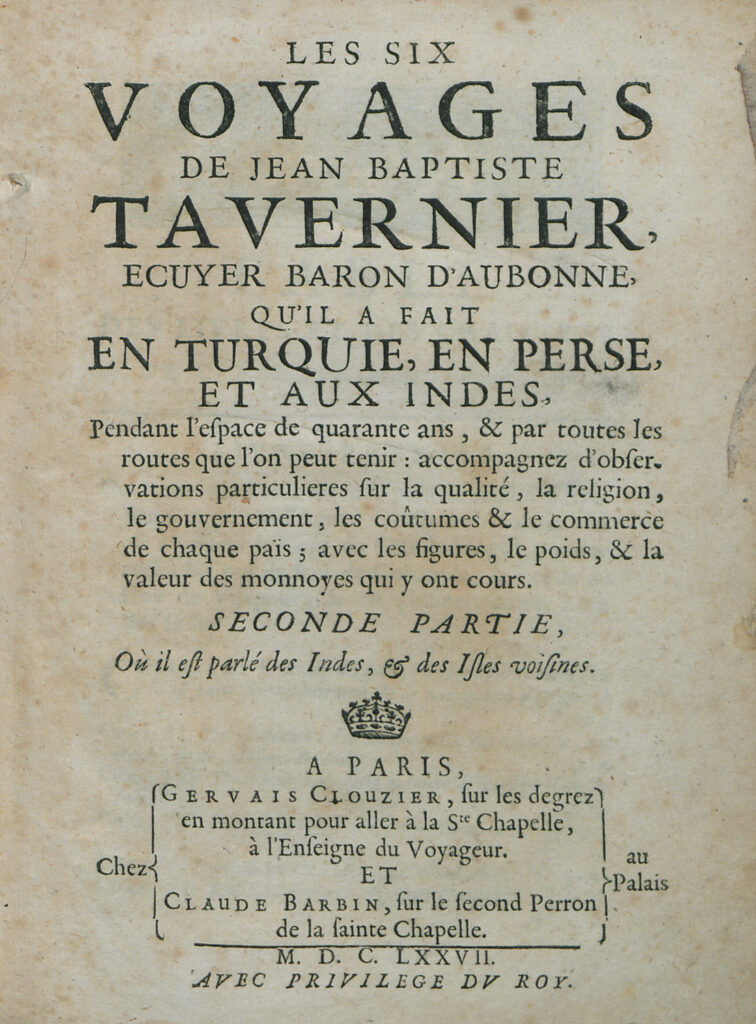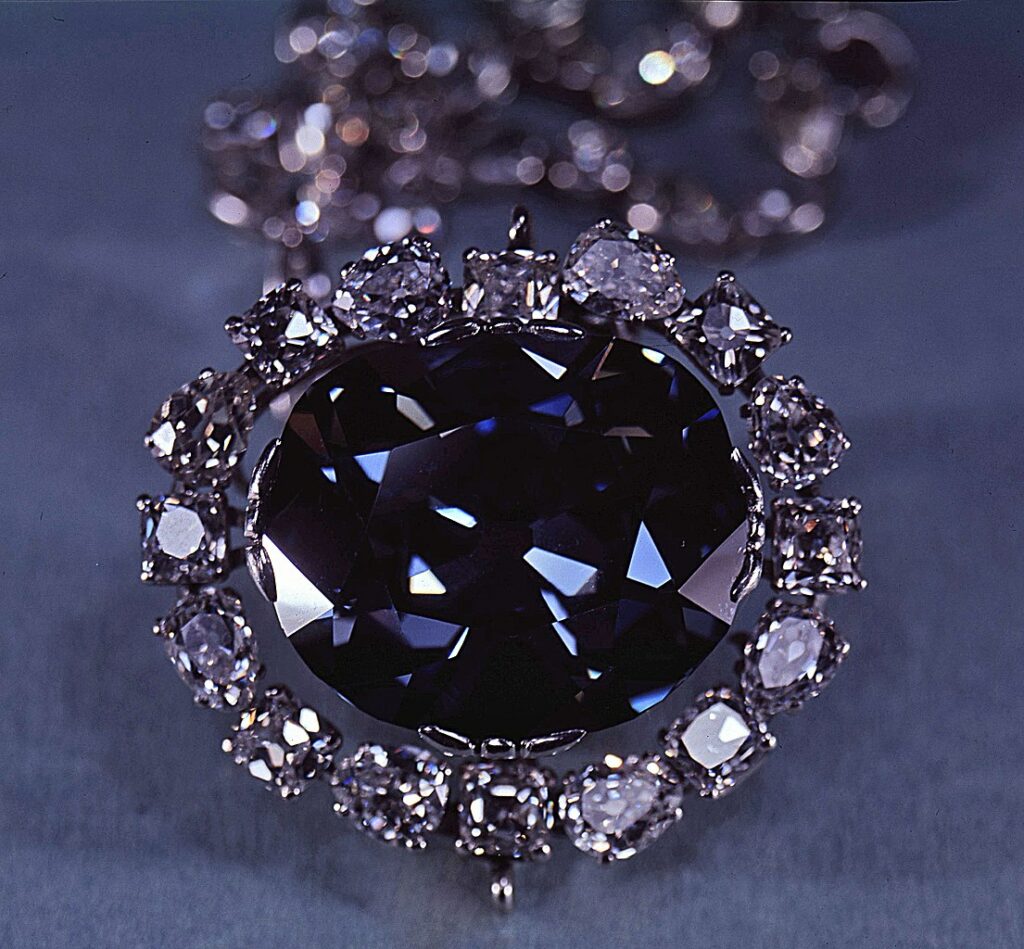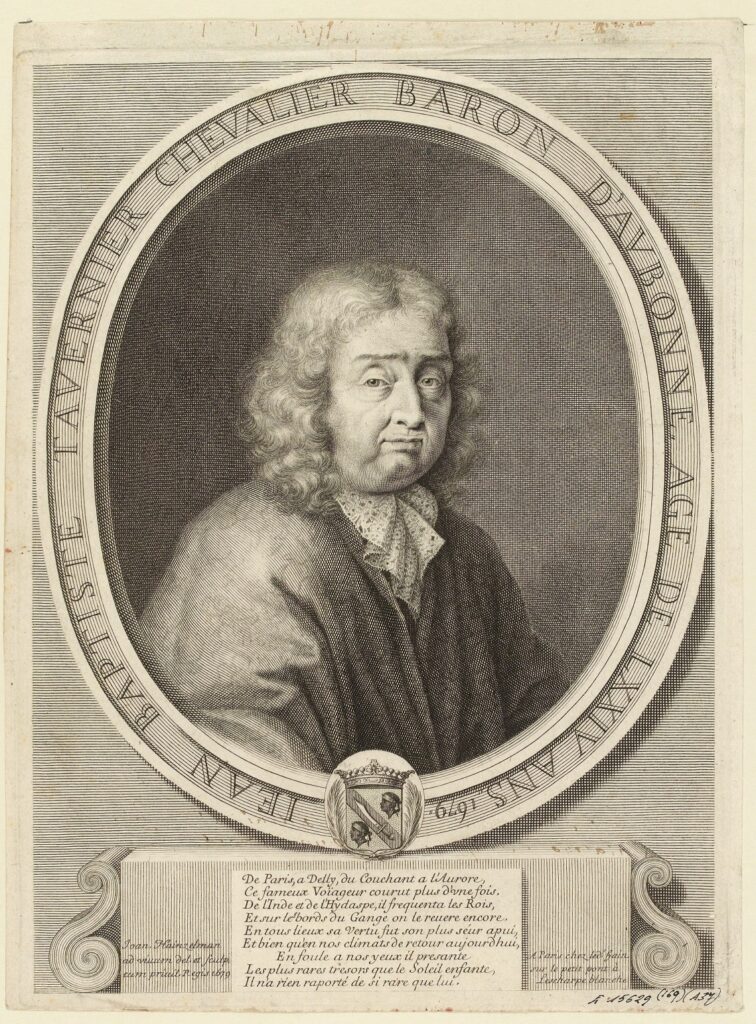When you are doing any kind of research or reading about jewelry history, a few names always show up. One of those is Jean Baptiste Tavernier, a 17th century gem dealer who travelled the world and whose name is inextricably linked with the Hope Diamond. By royal order he wrote about his travels and became a best-selling author. So who exactly was Tavernier and why was he so famous?
Jean Baptiste Tavernier was born in 1605 in Paris. His father Gabriel and his uncle Melchior were mapmakers and engravers. At a young age Tavernier became fascinated by travel to distant lands while listening to the tales of guests in their home. His first trips while he was growing up were to England, Germany and what were known as the Low Countries — Netherlands, Belgium and Luxembourg, but he soon expanded his horizons.
Tavernier’s Early Journeys

Tavernier’s real adventures began in his late teens. In 1624 he went to work for the Viceroy of Hungary. This led to a stint with the Duke of Nevers, in 1629, as an ensign artillery. Tavernier spoke several languages and his next job was to accompany the Irish mercenary Colonel Walter Butler as a translator. By now he had also traveled to Italy, Switzerland, Poland and Hungary in addition to countries visited in earlier journeys.
Tavernier was itching to visit the East. In 1631 he was able to join the entourage of two French travelers who were making the journey to the Middle East. He went to Constantinople and then parted ways with the other travelers, staying there for 11 months. He visited other countries in the area and returned to Paris in 1633.
His next journey started in 1638 and lasted until 1643. It was on this trip that Tavernier first went to India and visited the famed Golconda diamond mines. He started making numerous contacts and connections with nobility in the area and he began selling them gems, building up a stellar clientele of princes and emperors. Allegedly, Tavernier traveled with body guards because he liked to carry his diamonds and gems on his person in a leather belt. Between 1643 and 1668 Tavernier returned to the East four more times and in between travels, in 1662, he found time to meet and marry Madeline Goisse, the daughter of a Parisian jeweler.
Finding the Hope Diamond
It was a trip to India in 1666 that really made Tavernier famous. By this time he was a regular visitor to the country and it was on this trip that Tavernier found what is now known as the Hope Diamond. Historians seem unsure as to whether Tavernier purchased the 112-carat diamond, most likely from the Kollur Mine in Golconda, or if he acquired it in some other way.

Legend has it that Tavernier saw the gem in the forehead, or eye, of a statue of the Hindu Goddess Sita, and stole it. This led to rumors that he was ripped apart and killed by a pack of wild dogs. Since he returned to France from that trip and eventually died at 84, we know that is not true. Also, because he had many royal connections and customers in the area, it’s unlikely he would have done anything to jeopardize those relationships, still the question of how Tavernier acquired the rock is unanswered.
In 1668, Tavernier returned to Paris where he was introduced to King Louis XIV, also known as the Sun King. Tavernier sold the King the blue diamond that he had found in India, describing it as a “beautiful violet” color. The gem was a triangular shape that was very badly cut. However, it caught the fancy of the King and Tavernier sold him the diamond along with some other stones. Historic accounts vary as to exactly how many stones and for how much they were sold, but we do know that Tavernier was given a “letter of ennoblement” by the King and enough money to purchase the Seigneury of Aubonne, making him Baron of Aubonne.
A Royal Request

Given his extensive travels and knowledge of the middle and Far East, King Louis XIV requested that Tavernier write a book about his many travels as a way to help other merchants set up trade in India and the Middle East. His records of gemological information were reliable, however, his details about geography and the important people he met were less reliable, or at least were unable to be vetted. His most famous book is “Les Six Voyages de J.B. Tavernier”, written in 1676.
Tavernier was Protestant and the later years of the 1600s were a difficult time for people practicing that faith. King Louis XIV established the Bureau of Conversion. It was a ploy to get protestant nobility to convert to Catholicism, taking it a step further several years later with the Verification of Nobility, which took away the titles of any Protestant nobles who wouldn’t convert to Catholicism. In 1689 Tavernier journeyed to Russia, it’s unclear as to why he went there, but he died that year in Moscow at 84.
Adventurer, author and gem dealer Tavernier leaves behind a legacy of his journeys that help us understand the world of gems some 350 years ago in a way we would not if it wasn’t for his books. And of course, his travels brought us the Hope Diamond, one of the world’s most famous and storied diamonds.
Top of Page: Jean Baptiste Tavernier, Public Domain, Wikimedia Commons.
Authored by Amber Michelle
